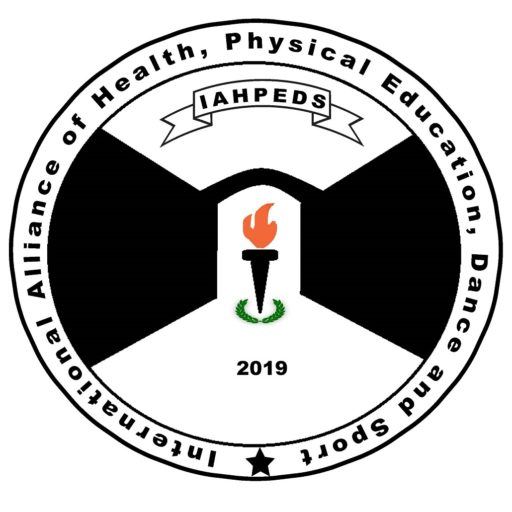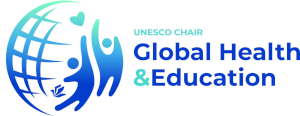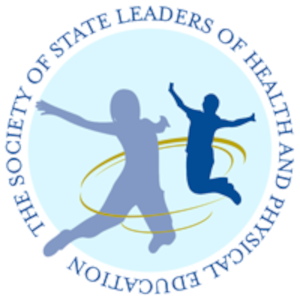IAHPEDS Summit in Conjunction with NAHPL
March 7, 2023
Newport Marriott Hotel, Rhode Island, USA (Newport Room)
10:20-10:30 (all time Eastern ST) Dr. Gregory Soukup, IAHPEDS President Opening Remarks
10:30-10:50 Dr. Gregory Soukup Promoting Health and Physical Education Literacy Internationally
This presentation will provide colleagues with information regarding the many benefits or membership in the International Alliance of Heath, Physical Education, Dance and Sport (IAHPEDS). While there are organizations like the National Academy of Health and Physical Literacy (NAPL) that are helping to define and promote the implementation and integration of health and physical literacy into curriculums in the United States, there is still a great amount of confusion regarding health and physical literacy and how to integrate them into international curriculums. There is also currently a great need for Quality Physical Education (QPE) curriculums in physical education programs around the world. The founders IAHPEDS feel there is a great need for an international organization to address these needs. IAHPEDS was created in 2019 to address this international need. The mission of IAHPEDS is to advance international research, learning, practices and standards among researchers, practitioners and students related to the Alliance’s disciplines of Health, Physical Education, Dance and Sport, and to motivate individuals to adopt healthy, physically active lifestyles. IAHPEDS also advocates for quality global Health Education, Physical Education, Dance & Sport efforts in schools and local communities around the globe. We also provide members with opportunities to share research related to Health Education, Physical Education, Dance and Sport.
10:55-11:15 Anlu Yang, Dr. Xioafen Hamilton, Jiren Zhang, Dr. Yongshun Wang
Fitness Testing in School-Based Physical Education Programs: The Application of Artificial Intelligence
Previous studies have found that youth fitness testing still have a number of problems (e.g., the lack of acceptable reliability and validity of test implementation, the weak connection between fitness education and fitness testing, and the embarrassment of forced performance in front of peers in a public setting, inaccurate physical fitness test results). As the new technology of the fourth industrial revolution, artificial intelligence (AI) has been widely used in many fields and achieved remarkable results nowadays.
The application of AI in fitness testing is of great significance to solve the problems. This study focused on analyzing the application of AI technology in youth fitness testing, aiming to improve health-related fitness among students. Through a careful examination of the existing literature on the topic, it was found that the application of AI in youth physical fitness testing presents the following advantages in comparison with the traditional testing protocol: (1) digital assessment, (2) enhanced reliability and validity of test procedures, (3) instant and visualized fitness testing result reports, (4) personalized feedback and suggestions based on the fitness testing results, and (5) flexible testing schedule.
11:20-11:50 Dr. Bonnie Edmondson Keynote Speech: The Road to Gold: Leading the Way
Olympian and Professor Emerita, Dr. Bonnie Edmondson will share strategies and leadership skills to empower teaching and coaching professionals to motivate students to excel. Lessons gleaned from champions in classrooms and on the field will be examined and implementation strategies discussed.
11:55-12:15 Dr. Mohammad R. Torabi Marketing and Fundraising for Health, Physical Education, Dance, and Sport
This presentation will focus on marketing and fundraising opportunities in health, physical education, movement science and sport. The presentation will be interactive in nature and provide insight to marketing and fundraising opportunities, along with engaging participants in the conversation. Although, the presenter’s backgrounds and experience are in public health, this session will bring discussion relevant to all conference attendees and multiple disciplines. As the Founding Dean Emeritus of School of Public Health of a Big Ten University with strong experience and background in fundraising for academic programs, I will present the principles of fundraising such as developing/having a worthy mission; matching the mission to potential donors; identifying, building, and cultivating relationships; and implementing good stewardship. Further, the presenter will briefly discuss the basic framework for marketing the program in order to attract participants for the program, as well as potential donors.
12:20-12:40 Dr. Yogesh Chander Game of ‘Thoda’: A Fading Legacy in Old Mahasu District of Himachal Pradesh
The Thoda has been a part of culture and civilization in the western Himalayas for a long time, in the form of folk games. Considering the scope of the present research, this is primarily delimited to the Shimla, Solan, and Sirmour regions (old Mahasu district) of Himachal Pradesh, India. Data were collected through fieldwork, interviews, oral literature, folk songs, and ballads. The genre of aboriginal theatre is part of ‘culture’ and ‘environment,’ consequently developing religious, political, economic, and social ideologies of the Himalayan region. The performance of ‘Thoda’ is an example of courage, toughness, and tolerance, including body, will, and mental qualities. The genesis of this performing art emerged after the battle of Mahabharata, and the same was carried forward through the coming generations. In the present research, there is an exploration and performance of actions, rites, and rituals during the enactment of ‘Thoda.’ The ‘players’ remember and celebrate the supremacy of their own Khund (clan) through the display of ‘Thoda’ skills combined with gestures, rituals, goat sacrifice for deities, slogans, folk dancing, folk songs, music, and ballads. ‘Thoda’ players are divided into two clans, the Shathas and Pashas, the descendants of Pandavas and Kauravas, the essential characters of the great Indian epic Mahabharata. They are celebrated honoring local deities and as festivals of remembering traditions. Still, nowadays, these formats of the folk game organization are not marked with the same zeal as they used to be in earlier times. After all, human beings are engrossed in their species’ origin and future transformations. Hence, there is a need to preserve and transmit such a legacy for sustainable development for the coming generations, necessitated by anthropological demands that form part of the ecology. The celebrations end with the preparation and community serving of local delicacies and cuisines.
1:10-1:30 Jazmine Torres, Tylan George, Keenon Pitts, Dr. Heather Barton-Weston, Dr. Gregory Soukup, Dr. Erlinda Lopez-Rodriguez Undergraduate Minority Students’ Perception of Participating in a Poverty Simulation
In 2018, a South Texas Hispanic Serving Institution hosted an interprofessional poverty simulation designed to provide undergraduate students majoring in allied health first-hand experience with the health disparities of future clients. Health disparity populations are racial/ethnic minorities, socioeconomically disadvantaged, underserved rural, and sexual/gender minorities. This experiential learning activity provides invaluable knowledge for undergraduate students seeking to work in healthcare. However, it is imperative to consider the impact this experience could have on undergraduate students who maybe health despaired. Therefore, the purpose of this presentation is to discuss the perception of undergraduate minority students’ participation in a poverty simulation.
1:35-1:55 Dr. Kadi Bliss, Dr. Tyler Nolting, Constanza Zurita Valdebenito, Novalee Feichko
ATeaching Ground for Racial Equity: The Mt. Olive Cemetery Experience
Mt. Olive Cemetery, one of Clarksville, Tennessee’s largest and oldest African American burial grounds, at 7.24 acres, with over 1,350 interments, occurring from 1817-1958, represents individuals who lived during eras of extreme racism and oppression, such as enslavement and Jim Crow. Interventions focused on real-world occurrences and historical events aimed at impacting university students’ emotions are important when combatting racism, which is a public health crisis/emergency. This pedagogical mixed methods research study utilized the theory of planned behavior to identify whether or not a Mt. Olive Cemetery tour and headstone-cleaning seminar and a 12-week curriculum and journaling approach were effective at impacting university students’ emotions, perceptions, and understanding; awareness; attitudes; beliefs; intentions; and behaviors related to health disparities, health inequities, racism, and oppression experienced by African Americans from the 19th – 21st centuries. Study participants were 26 university students taking an undergraduate course focused on social determinants of health and health disparities. This intervention challenged students to step outside of their comfort zones and to face the history concerning racism and oppression experienced by African Americans over the last few centuries, to develop a more inclusive society, where individuals care for one another regardless of race.
2:00-2:20 Bryanna Espinoza, Marisa Hernandez, Andrea Martinez, Isabelle Arnold, Samantha Perez, Mariely Mendoza, Sylvia Carreno, Dr. Heather Barton-Weston, Dr. Erlinda Lopez-Rodriguez, Dr. Shaylon Rettig, Dr. Lucero Martinez-Delgado, Dr. Gregory Soukup
Utilizing Internal Institutional Collaborations to Expand Health Profession Undergraduate Student Field Experience
COVID-19 highlighted many of the weaknesses within the current approach to our healthcare services including readiness, insufficient resources, response time, health literacy, adequate access to services, and health equality. The impact of COVID-19 calculated through the suffering and loss of human life initiated the call for a new patient/client centered healthcare model. As society transitioned into post-COVID, the current healthcare service model has transitioned focusing heavily on an interdisciplinary approach to patient/client care. The next generation of healthcare professionals, many of whom are still undergraduate students, will be in the forefront of these evolving patient/client healthcare approaches. Unfortunately, many upcoming graduating undergraduate students will not be adequately prepared for this shift. Understandably, many four-year universities prioritized transitions to student online learning. However, one South Texas four-year university implemented and rolled out an interdisciplinary oversight division during the height of the pandemic. Thus, providing many undergraduate students with hands on experiential learning opportunities that sought to better prepare these undergraduates prior to graduation. Students were given opportunities to collaborate on employee wellness assessments, LBGTQ+ health fairs, rural health outreach initiatives, and an international underserved impoverish healthcare mission trip. Under the guidance of the institution’s “Unified in Wellness” division, students from professional schools worked hand in hand with undergraduate students within different health profession fields. Thus, providing these undergraduate health professions students with firsthand experience that should better prepare them upon entering their professions. It is the purpose of this presentation to allow both faculty and undergraduate health professions students to present the process of collaborating and the learning outcomes related to these interprofessional field opportunities.
2:25-2:45 Dr. Dwan Bridges, Dr. Xioafen Hamilton, Dr. Elizabeth Bridges Revitalization of the Physical Education Teacher Education Program
Although the enrollment of students is increasing in kinesiology departments across the nation there is a steady decline of students pursing the Physical Education Teacher Education (PETE) program. This influx of students is majoring in the sciences not pedagogy to achieve prerequisites for future allied health professions. As a result, many institutions have abandoned the PETE programs to focus on a money-making cohort of students that will not have any connection or alliance to pedagogy. Although, most states have a shortage of teachers it is well known that physical education is usually cut from K-12 curriculum due to financial constraints. For example, in the state of California there is no elementary physical education program provided by PETE graduates. This is the responsibility of the self-contained classroom teacher who can delegate this responsibility to the paraprofessional. Professional work stability in the allied health field may be a factor to persuade students into areas other than PETE. The purpose of this presentation is to discuss strategies for engaging students in the PETE program. It is probably time for us to borrow strategies from the marketing-business department for recruitment and retention strategies for the PETE program.
2:50-3:10 Dr. Elizabeth Bridges, Dr. Xioafen Hamilton, Dr. Dwan Bridges Relevance of Writing in a Physical Education Teacher Education Program
Writing is the foundation of any academic program. The Physical Education Teacher Education (PETE) program is no exception to demonstrate the relevance and necessity of writing. PETE is based on an interdisciplinary foundation of sociology, humanity, and science which require professional writing for success. It is important for one to plan a course of action in the PETE profession and it starts with writing. The preservice training must provide opportunities for students to master professional writing skills. Repetition and duplication of movements are important skills set taught in PETE, therefore writing maintains the accuracy of those skills. The purpose of this presentation is to discuss the relevance of writing in PETE. This discussion will destroy the myths about writing in PETE and promote bridging writing in coursework to enhance professional practice.
3:15-3:35 Dr. Tyler Nolting, Dr. Lisa Lewis, Constanza Zurita Valdebenito, Dr. Fran Meyer
Youth Risk Behavior Survey Dance Question: 2019 Results from Nebraska and Tennessee
A question assessing organized dance activity participation (i.e., cheerleading, dance team, flag team, or dance classes) was added to the Youth Risk Behavior Survey (YRBS) Optional Questions List in May 2018, with Nebraska (NE) and Tennessee (TN) adopting the question on their 2019 standard YRBS questionnaires. One hundred public high schools participated (66 in NE and 34 in TN), with 2,968 student respondents (1,282 in NE and 1,686 in TN). NE had higher dance participation than TN (28.4% versus 23.7%), and females participated at nearly twice the rate as males. By age and grade, dance was highest among NE females 15 years or younger (37.2%) and 9th-grade NE females (39.7%), respectively. By race/ethnicity, NE Hispanic/Latino students had the highest dance participation (31.7%). Chi-square tests showed significant associations (p < .05) in both states for dance and females (p = .027), White students (p = .033), and students 15 years or younger (p = .020). The two-sample test for equality of proportions with continuity correction showed significant differences (p < .05) between females and males (p < .001), females in NE versus TN (p = .031), White students in NE versus TN (p =.037), and students 15 years or younger in NE versus TN (p = .023). Adding the organized dance activity question on the YRBS provides important data for school physical education curriculum and community physical activity programs. Its inclusion on more states’ YRBS questionnaires will yield additional data to assess high school student participation in organized dance activities.
3:40-4:00 Dr. Tarin Hampton Understanding “Movement Gestures that Communicate a Message” in Ghanaian Cultural Dances
Within the rich cultural dance practices of Ghana, West Africa, you will discover that messages are being communicated. The messages are relayed by the graceful expressive movements of the talented performers. Observers educated to “understand” the movement gestures gain a greater appreciation, beyond observing the exciting movements. Participants will be introduced to a sampling of the gestures and the origins and communication styles presented throughout the many regions of Ghana. This session will include an explanation of a virtual online performance, followed by a participation session for attendees to enjoy.
4:05-4:25 Dr. Mary Ann Laverty What is a Sun Salutation?
This brief session will explore the origins of the Sun Salutation or Sūryanamaskāra, literally translating as Salute to the Sun. With so many linages of Yogic traditions we see great variation in how Yoga teachers implement the sun salutation into their classes. How and why did sun salutations originate and what is it in the purest traditional form? We will review the historical context surrounding the origin and how one short movement series integrates both physical and mental benefits in a beautifully structured sequence. There will be a practice of sun salutation for the second half of the session, so bring your yoga mat!
4:30-4:50 Dr. Fran Meyer Organizational Leadership: A Focus on Team Building
It would be difficult for any not-for-profit, for-profit, or governmental organization to operate effectively without a planned leadership structure. This structure needs people in positions to develop the vision, mission, and purpose(s) for the group, as well as a process for reaching the identified outcomes or goals. The organization needs individuals in a variety of roles who also understand the scope and depth of operations needed to achieve success. Within any organization, individuals with specific skills, knowledges, and characteristics are needed to address or implement certain tasks that move projects or plans forward. All of these individuals that have particular roles, skills, and knowledges that need guidance on strategies for accomplishing their specialized task. They need to understand how their section connects to other units within the group to fulfill the organizations’ overall purposes and goals. The success of the multi-level group work is dependent on strategic team efforts. To ensure strong team(s) work, the organization needs to invest in robust team building activities to meet needs of the diverse teams engaged in the organization’s work. A key objective in team building is the multi-level and cross-connections education and training to help every team and each team member succeed (young or old, inexperienced or seasoned veteran). This session will help participants to define organizational team building, understand the basics of a team building process, know the connections between team building and education, determine what hinders team success, and discuss potential next steps in their own personal team-building challenges.
4:55-5:15 Dr. Naoki Suzuki The Representation of Physical Activities in the Meta-verse
As a new digital communication environment, the three-dimensional virtual space known as the “metaverse” is attracting a great deal of attention. The definition of “meta-verse” is unclear. In this study, however, meta-verse is defined as “participating in a virtual space on the Internet as an avatar and communicating with others. In the meta-verse environment, not only can gestures and hand gestures be expressed through avatars, but by wearing VR headsets, users can perform physical activities together as if they were face-to-face. It has been reported that by communicating as an avatar in a meta-verse space in this way, people who normally have little communication with others are now able to actively engage with others. Therefore, in this study, the focus was placed on a dance unit, where embarrassment tends to inhibit movement, to clarify the characteristics of physical activity when learning to dance by becoming an avatar in a meta-verse space. In this study, inclusive physical education in which healthy children and children with disabilities learn together in a mixed environment was the subject of the research, targeting senior high school students. interviews were conducted after the class practice, which consisted of one 30-minute session, and these were analyzed qualitatively. The results will be reported in detail on the day.




